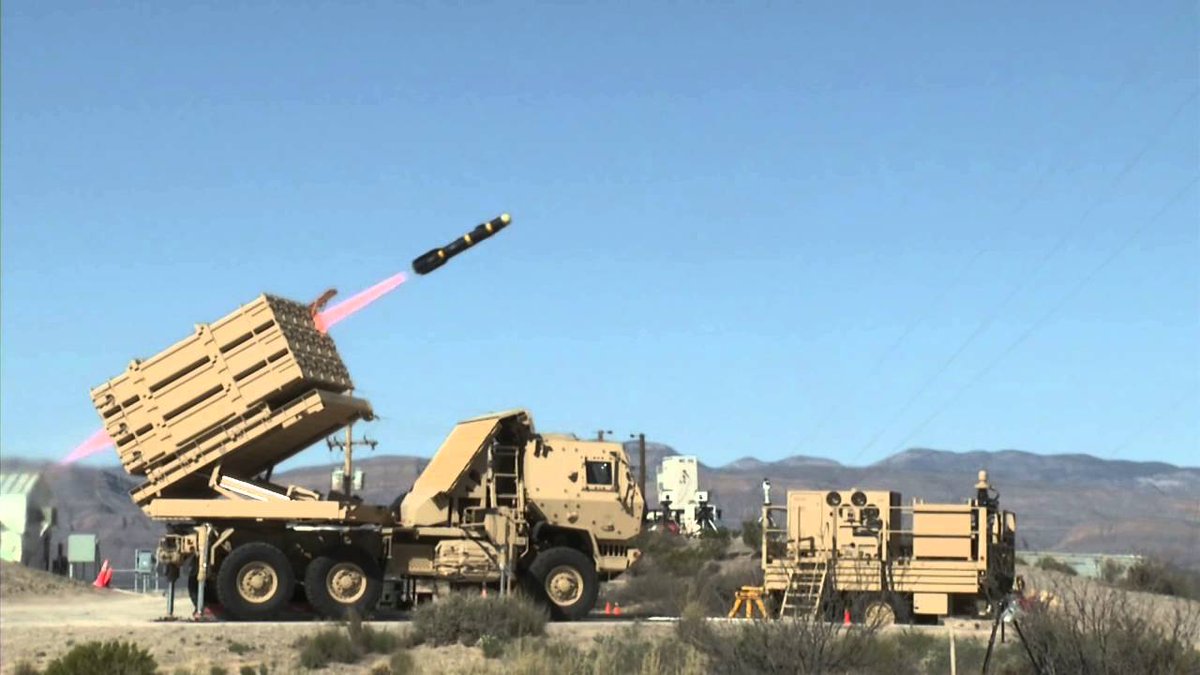The U.S. Army’s westernmost island in the Pacific, Guam, is set to receive an integrated, foolproof missile defense system amid a rapidly growing threat presented by adversaries like China and North Korea.
The 94th Army Air and Missile Defense Command announced on May 15 that the Army is on schedule to deliver a “composite” missile-defense battalion that will become part of an integrated defensive system for Guam.
The Commander, Brig. Gen. Patrick Costello explained that the Army’s plan to combine its missile-defense capabilities—which primarily comprise the Terminal High Altitude Area Defense, or THAAD, and Patriot systems—will be tested on Guam using a composite battalion strategy.
“I can’t comment on the exact timeline, but the Army remains on track on the commitments that they’ve made to [U.S. Indo-Pacific Command] to deliver capability on time.” “We are making strides daily on improving our defensive posture in Guam,” he said.
The Commander told reporters that in addition to the THAAD and Patriot missile defense systems, the Army’s defense system for Guam will also employ the Indirect Fire Protection Capability (IFPC). This mobile ground-based system is currently not in service but is designed to thwart rockets, mortars, drones, and cruise missiles.
He explained that the command system designed by Northrop Grumman eliminates stove-piping, which has typically kept missile-defense systems apart by connecting any sensor or radar to any weapon, anywhere.
Without providing a specific schedule, Costello said the Army will test the combined components in real time on Guam before the end of this year. Costello reiterated that the Integrated Air Missile Defense Battle Command System will be deployed over the next few years, significantly bolstering Guam’s defense.
He said, “By consolidating data from a number of different sensors, including radars, satellites, and other partners and allies in the joint force, [the Battle Command System] creates a unified and comprehensive picture of the battlespace, providing expeditionary forces unparalleled situational awareness in decision-making capabilities.”
The Battle Command System (IBCS) of the United States Army Integrated Air and Missile Defense [IAMD] is a plug-and-play network designed to allow a radar or any other defensive sensor to feed its data to any available weapon, or, as the saying goes, “connect any sensor to any shooter.”

In essence, the IBCS is intended to intercept short-, medium-, and intermediate-range ballistic missiles in their terminal phase and connect radars over vast distances.
That said, the U.S. Army’s defense system for Guam makes just one component of the Pentagon’s integrated Guam defense system. It also includes the Missile Defense Agency’s capabilities and Navy warships outfitted with the Aegis Combat System that are dispatched to the region as needed.
As per previous reports, the all-encompassing U.S. strategy to strengthen Guam’s missile defenses against future Chinese and North Korean calls for the installation of a layered missile defense system known as Enhanced Integrated Air and Missile Defense (EIAMD), which consists of the Patriot, Typhon, Aegis Ashore, and Terminal High Altitude Area Defense (THAAD) systems.
Costello, however, believes that the command system will necessitate a significant overhaul of the 94th’s resource and manpower deployment processes.“If we have things called THAAD batteries, Patriot battalions, IFPC battalions, divisional air defense battalions in the future, we’re doing something wrong,” he said.
“We’re not keeping up with the threat by having different formations for different threats. One formation needs to handle a wide variety of threats.” Unlike traditional single-component units, composite battalions will be uniquely structured to integrate multiple assets and capabilities into a unified force,” he added.
Guam’s Defense Is A Priority
Over the past two decades, Guam has emerged as a linchpin of Pentagon strategy, gaining heightened significance as China’s military capabilities and ambitions have expanded.
The Pentagon seeks to surround Guam with a robust missile defense system to protect this vital military outpost in the Western Pacific from possible threats, especially from China, as tensions continue to escalate and the prospect of a conflict dominates all strategies.
Guam is home to ports vital for supporting the operations of aircraft carriers and nuclear submarines, among other naval missions. Additionally, Guam is believed to be used as a launchpad by U.S. fighters and bombers in case of a potential conflict with China.
However, it is for this reason that Guam remains under constant threat from ballistic missiles that could be fired by the PLA, including the infamous “Guam Killer.”
Guam is a crucial strategic site for homeland defense because it helps the United States repel enemies, respond to emergencies, and preserve an open and free Indo-Pacific.
Concerns about Guam’s safety have only grown due to China’s recent developments in hypersonic technologies, such as cruise missiles and hypersonic glide vehicles. The military has, therefore, taken the initiative to modify its tactics to counter these changing threats.
A document published by the Governor of Guam’s office last year said, “The regional missile threats to Guam continue to increase and advance technologically. Therefore, the U.S. Indo-Pacific Command has identified a requirement for an Enhanced Integrated Air and Missile Defense system on Guam as soon as possible to address the rapid evolution of adversary missile threats.”
It is for this reason that the Missile Defense Agency transitioned its power to the U.S. Army last year on the integrated missile defense of Guam. “Having a single designated lead service will make sure that that integration happens with the right oversight,” Deputy Secretary of Defense Kathleen Hicks said at the time.
The U.S. Army’s Rapid Capabilities and Critical Technologies Office is establishing a collaborative team to carry out the Pentagon’s plan for Guam’s air and missile defense system. Pentagon officials believe 2024 will be crucial for the Army to strengthen defenses surrounding Guam because they are focusing on China as a rising threat.
The service intends to have a basic capability in place by the end of the year to assist fend off a possible attack.
- Contact the author at sakshi.tiwari9555 (at) gmail.com
- Follow EurAsian Times on Google News